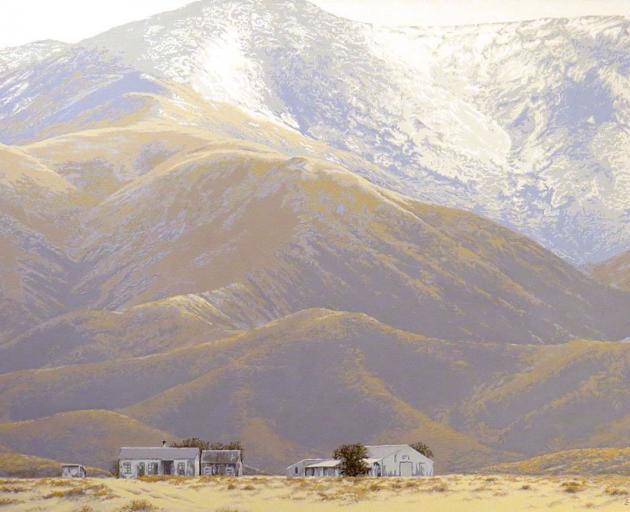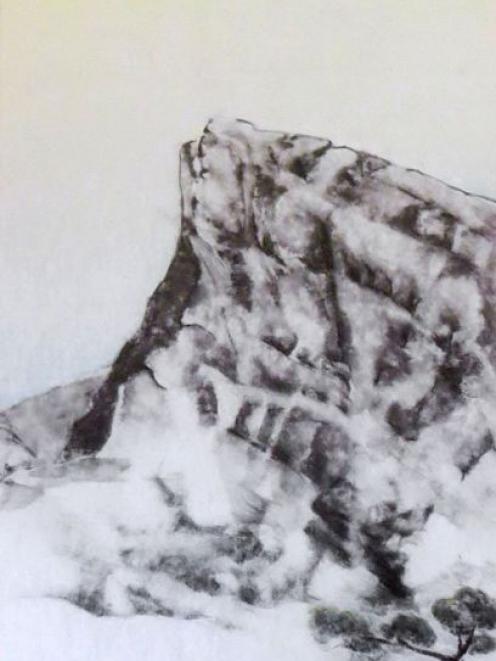
Otago Art Society 139th Annual Exhibition (The Art Station)
A fine mixture of works fill the art society's railway station gallery, providing a good overview of local art.
More than 70 artists are represented in this year's annual exhibition, which seems to have a strong weighting towards landscapes.
Fine examples in this genre include works by Philip Markham, Cath McLean, Annie Pepers, Gill Williamson and Kelly Wilkinson, along with two lovely cameos by Marcus Ebbett.
Scott Drummond's atmospheric evening townscape is also memorable, as is Elizabeth Bisset's large, hazy Maniototo scene.
Portraits and animal studies are scarcer this year than in the past, though several are worthy of mention, including Sheila Brown's fine acrylic tui, and Janet Duncan's friendly watercolour puppy.
Among human portraits, Diane Wales' bold study and Geoff Williams' more finessed nude, both in acrylic, are of note.
Architectural details provide inspiration for impressive works by Doug Hart, Desiree de Launey Nicholson, and Diane Warren.
Three-dimensional works include stunning ceramic bowls by Danny Morwood and similarly fine glasswork by Robyn Douglas, and two joyous clay figures by Suzanne Emslie.
These latter were awarded first prize by the competition's judge, local artist and art teacher Steev Peyroux.
Morwood's ceramics gained second place, and third place went to Karin Werner's evocative oil-colour view from Bluff Hill.

''Stationed at Gallipoli'', Louisa Baillie (The Fix, Frederick Street)
Louisa Baillie presents a personal exhibition at The Fix cafe, commemorating the centenary of the Gallipoli landings.
Baillie's exhibition was inspired by her grandfather Montie's letters home from the battle.
Despite the horrors and carnage that surrounded the troops, the messages show how they were able to adjust to the unreal nature of their situation.
This was necessary in order to maintain the troops' morale and sanity, as was the strength of the camaraderie formed among the troops.
Baillie was lucky enough to be chosen to travel as a direct descendant to this year's centenary commemoration in Turkey.
Her experiences, combined with Montie's photographs, letters and diaries, formed the basis for a series of large wall hangings that capture the essence of the land and the sheer impossibility of attempts to capture it.
The works are in mixed media on soft fabric, allowing the images to mimic fading photographs and to emphasise the haze of chronological distance from the events.
The rough Otago-like hills of the Dardanelles become the setting for an all-too-real play, embellished with words from the original protagonists.
The size of the works means that smaller copies only will be on display throughout the exhibition alongside one of the originals, this original being swapped to the next in sequence with each week of the display.

''Third'', Flynn Morris-Clarke (Brick Brothers Gallery)
Flynn Morris-Clarke's latest exhibition is an intriguing mix of two different sets of work, a large group of oil paintings in the main room, plus a smaller series of graphite sketches.
The main selection of images is an interesting assembly of pieces, with the largest work being a fine monochrome beachscape dedicated to a recently deceased friend.
Many of the other paintings are more confrontational and transgressive in subject, and seem even more so when contrasted with this gentle beach scene.
Though not directly from films, they have a cinematic quality, and focus largely on sexuality.
The subject in these works is, however, less important than the techniques used in creating the images.
The soft-focus of Kunst and Sleeper, and the flat, sheen-like finish that the works have been given renders them as mood pieces.
The smaller works in the display, like the beachscape, are presented in monochrome and here the artist's technique gives the finished work an almost graphite-like quality.
Graphite itself is to the fore in the sketches presented as tasters for Morris-Clarke's next exhibition. In these works, athletes are strikingly drawn in action as they compete at high jump and cross-country skiing.
The sketches are bold and effective, and give a tantalising glimpse at the artist's next project.












